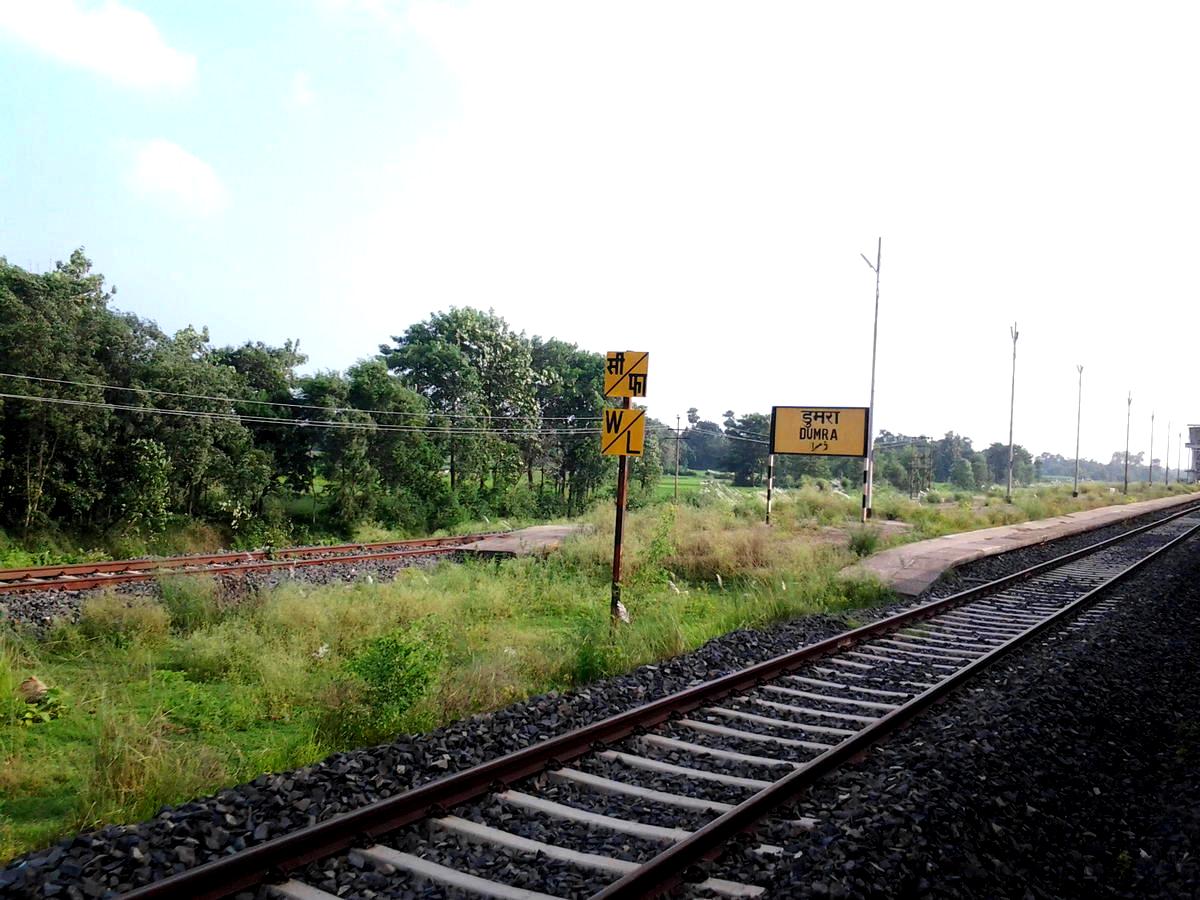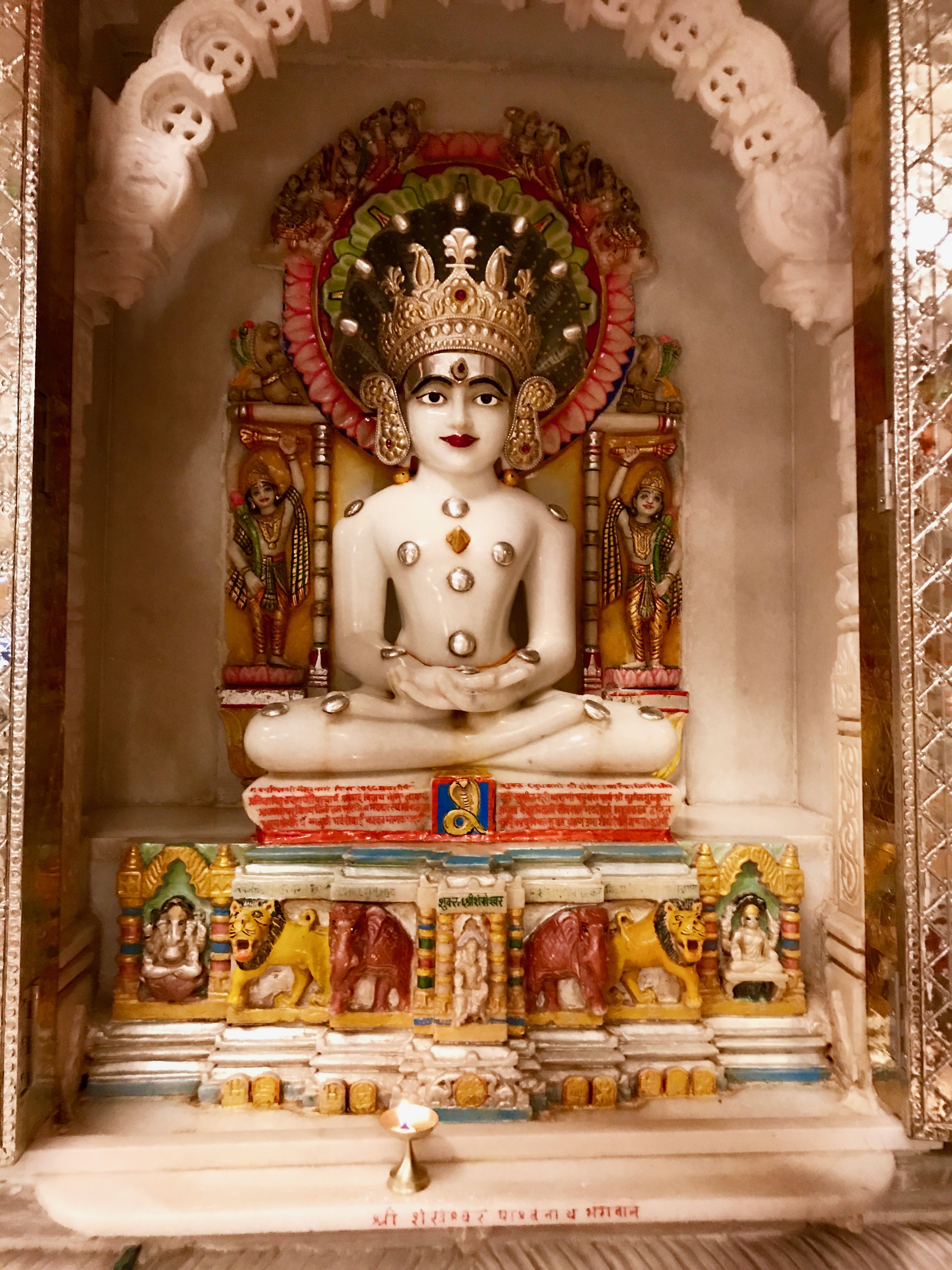|
Mithilapuri Jain Teerth
Mithilapuri Jain Teerth ( Maithili: मिथिलापुरी जैन तीर्थ) is a sacred place in the tradition of Jainism. It is believed to be the birthplace and the penance place of the two Jain Tirthankars Bhagwan Mallinath Swami and Bhagwan Naminath Swami. According to the Digambara sect of Jainism, it is located at the Sursand town of Sitamarhi district in the Mithila region of Bihar. It is very close to the line of the Indo-Nepal International Border at the outskirts of the Sursand town. Similarly for the Śvetāmbara sect of Jainism, it is believed to be located at Dumra suburb in the city of Sitamarhi in the Mithila region. Description In the tradition of Jainism, Mithila is considered as the sacred place where more than two tirthankars were born. In Jainism, there are two major sects Digambara and Shvetambara schools of thought. The location of the Mithilapuri Jain Teerth is believed to be at the two different locations Sursand and Dumra in th ... [...More Info...] [...Related Items...] OR: [Wikipedia] [Google] [Baidu] |
Jainism
Jainism ( ), also known as Jain Dharma, is an Indian religions, Indian religion whose three main pillars are nonviolence (), asceticism (), and a rejection of all simplistic and one-sided views of truth and reality (). Jainism traces its spiritual ideas and history through the succession of twenty-four , supreme preachers of ''dharma''. The first in the current time cycle is Rishabhadeva, who tradition holds lived millions of years ago; the 23rd is Parshvanatha, traditionally dated to the 9th century Common Era, BCE; and the 24th is Mahāvīra, Mahavira, who lived . Jainism is considered an eternal ''dharma'' with the guiding every time cycle of the Jain cosmology, cosmology. Central to understanding Jain philosophy is the concept of ''bhedavijñāna'', or the clear distinction in the nature of the soul and non-soul entities. This principle underscores the innate purity and potential for liberation within every Jīva (Jainism), soul, distinct from the physical and menta ... [...More Info...] [...Related Items...] OR: [Wikipedia] [Google] [Baidu] |
Dumra, Sitamarhi District
Dumra is a town and a notified area in Sitamarhi district in Bihar, India. Dumra is the headquarter of Sitamarhi district. It has approximately 16 wards. There is a small railway station situated in Dumra. Geography Dumra is located at . It has an average elevation of 86 metres (282 feet). Demographics India census A census (from Latin ''censere'', 'to assess') is the procedure of systematically acquiring, recording, and calculating population information about the members of a given Statistical population, population, usually displayed in the form of stati ..., Dumra is a Census Town city in district of Sitamarhi, Bihar. The Dumra Census Town has population of 326,332 of which 173,053 are males while 153,279 are females as per report released by Census India 2011. Education •Sitamarhi Central School, Simra *Springdales International Girls' School, Sitamarhi *Brilliant Public School Sitamarhi *Delhi Public School Lagma *Hellen's School Sitamarhi * Janki Vid ... [...More Info...] [...Related Items...] OR: [Wikipedia] [Google] [Baidu] |
Jainism In India
Jainism is India's sixth-largest religion and is practiced throughout India. Per the 2011 census, there are 4,451,753 Jains in the 1.35 billion population of India, the majority living in Maharashtra, Rajasthan, Gujarat, Madhya Pradesh and Karnataka. However, the influence of Jainism has been far greater on the Indian population than these numbers suggest. Jains can be found in every state and all union territories, varying from large societies to smaller. The state of Jharkhand, with a population of 16,301 Jains also contains the holy pilgrimage centre of Sammed Shikharji. Jains can be found throughout India and in many other countries throughout the world. History Jain doctrine teaches that Jainism has always existed and will always exist. Like most ancient Indian religions, Jainism has its roots from the Indus Valley civilization, reflecting native spirituality prior to the Indo-Aryan migration into India. Other scholars suggested the Shramana traditions were separate and ... [...More Info...] [...Related Items...] OR: [Wikipedia] [Google] [Baidu] |
Sitamarhi
Sitamarhi is the headquarters of the Sitamarhi district in Tirhut Division, Bihar. The city was named in honour of Sītā, wife of Rāma, who was born in Sitamarhi according to Hindu legends. In 1875, a subdivision for Sitamarhi was created within the Muzaffarpur district. Sitamarhi was detached from Muzaffarpur and made a separate district on December 11, 1972.District Health Action Plan National Rural Health Mission, Government of Bihar, Retrieved 25 May 2010 The district headquarters is located in Dumra, south of Sitamarhi's main temple. Geography Sitamarhi has an average elevation of . Pupri, Bairgani ...[...More Info...] [...Related Items...] OR: [Wikipedia] [Google] [Baidu] |
Rajasthan
Rajasthan (; Literal translation, lit. 'Land of Kings') is a States and union territories of India, state in northwestern India. It covers or 10.4 per cent of India's total geographical area. It is the List of states and union territories of India by area, largest Indian state by area and the List of states and union territories of India by population, seventh largest by population. It is on India's northwestern side, where it comprises most of the wide and inhospitable Thar Desert (also known as the Great Indian Desert) and shares a border with the Pakistani provinces of Punjab, Pakistan, Punjab to the northwest and Sindh to the west, along the Sutlej-Indus River valley. It is bordered by five other Indian states: Punjab, India, Punjab to the north; Haryana and Uttar Pradesh to the northeast; Madhya Pradesh to the southeast; and Gujarat to the southwest. Its geographical location is 23°3' to 30°12' North latitude and 69°30' to 78°17' East longitude, with the Tropic of Can ... [...More Info...] [...Related Items...] OR: [Wikipedia] [Google] [Baidu] |
Bikaner
Bikaner () is a city in the northwest of the States and territories of India, state of Rajasthan, India. It is located northwest of the state capital, Jaipur. It is the administrative headquarters of Bikaner District and Bikaner division. Formerly the capital of the princely Bikaner State, the city was founded by Rao Bika, a Rajput Tribal chief, chief of the Rathore dynasty in 1488 CE and from its small origins it has developed into the fourth largest city in Rajasthan. The Ganga Canal (Rajasthan), Ganga Canal, completed in 1928, and the Indira Gandhi Canal, completed in 1987, facilitated its development. Etymology The name "Bikaner" is a combination of two elements: "Bika", derived from the city's founder, Rao Bika and "Ner", which is believed to mean "place" or "city" in the local Rajasthani languages, Rajasthani language. Hence, "Bikaner" translates to "the city of Bika". History file:Bikaner coat of arms.jpg, left, Bikaner coat of arms Prior to the mid 15th century, t ... [...More Info...] [...Related Items...] OR: [Wikipedia] [Google] [Baidu] |
Śvetāmbara
The Śvetāmbara (; also spelled Shwetambara, Shvetambara, Svetambara or Swetambara) is one of the two main branches of Jainism, the other being the Digambara. ''Śvetāmbara'' in Sanskrit means "white-clad", and refers to its ascetics' practice of wearing white clothes, which sets it apart from the ''Digambara'' or "sky-clad" Jains whose ascetic practitioners go nude. Śvetāmbaras do not believe that ascetics must practice nudity. The Śvetāmbara and Digambara traditions have had historical differences ranging from their dress code, their temples and iconography, attitude towards Jain nuns, their legends and the texts they consider as important. Śvetāmbara Jain communities are currently found mainly in Gujarat, Rajasthan and coastal regions of Maharashtra. According to Jeffery D. Long, a scholar of Hindu and Jain studies, about four-fifths of all Jains in India are Śvetāmbaras. History and lineage Śvetāmbaras consider themselves to be the original followers of Maha ... [...More Info...] [...Related Items...] OR: [Wikipedia] [Google] [Baidu] |
Interior Of The Svetambara Jaina Temple At Mithila
Interior may refer to: Arts and media * ''Interior'' (Degas) (also known as ''The Rape''), painting by Edgar Degas * ''Interior'' (play), 1895 play by Belgian playwright Maurice Maeterlinck * ''The Interior'' (novel), by Lisa See * Interior design, the trade of designing an architectural interior * ''The Interior'' (Presbyterian periodical), an American Presbyterian periodical * Interior architecture, process of designing building interiors or renovating existing home interiors Places * Interior, South Dakota * Interior, Washington * Interior Township, Michigan * British Columbia Interior, commonly known as "The Interior" Government agencies * Interior ministry, sometimes called the ministry of home affairs * United States Department of the Interior Other uses * Interior (topology), mathematical concept that includes, for example, the inside of a shape * Interior FC, a football team in Gambia See also * * * List of geographic interiors * Interiors (other) * ... [...More Info...] [...Related Items...] OR: [Wikipedia] [Google] [Baidu] |
Indian Subcontinent
The Indian subcontinent is a physiographic region of Asia below the Himalayas which projects into the Indian Ocean between the Bay of Bengal to the east and the Arabian Sea to the west. It is now divided between Bangladesh, India, and Pakistan. (subscription required) Although the terms "Indian subcontinent" and "South Asia" are often also used interchangeably to denote a wider region which includes, in addition, Bhutan, the Maldives, Nepal and Sri Lanka, the "Indian subcontinent" is more of a geophysical term, whereas "South Asia" is more geopolitical. "South Asia" frequently also includes Afghanistan, which is not considered part of the subcontinent even in extended usage.Jim Norwine & Alfonso González, ''The Third World: states of mind and being'', pages 209, Taylor & Francis, 1988, Quote: ""The term "South Asia" also signifies the Indian Subcontinent""Raj S. Bhopal, ''Ethnicity, race, and health in multicultural societies'', pages 33, Oxford University Press, 2007, ; Q ... [...More Info...] [...Related Items...] OR: [Wikipedia] [Google] [Baidu] |
Panch Kalyanaka
Panch Kalyanaka (, "Five Auspicious Events") are the five chief auspicious events that occur in the life of tirthankara in Jainism. They are commemorated as part of many Jain rituals and festivals. Kalyanaka These auspicious life events are as below: # Chyavana kalyāṇaka: When the ātman (soul) of a tirthankara enter's their mother's womb. # Janma kalyāṇaka: Birth of the tirthankara. Janmabhisheka is a ritual celebrating this event in which Indra does abhisheka with 1008 Kalasha (holy vessels) on the tirthankara on Mount Meru. # Dīkṣā kalyāṇaka: When a tirthankara renounce all worldly possessions and becomes an ascetic. # Kēvalajñāna kalyāṇaka: The event when a tirthankara attains kēvalajñāna (absolute knowledge). A divine samavasarana (preaching hall) appears, from where the tirthankara delivers sermons and restores the Jain community and teachings. # Nirvāṇa kalyāṇaka: When a tirthankara leaves their mortal body, it is known as nirvana. It i ... [...More Info...] [...Related Items...] OR: [Wikipedia] [Google] [Baidu] |
Dainik Bhaskar
''Dainik Bhaskar '' () is a Hindi-language daily newspaper in India which is owned by the Dainik Bhaskar Group. According to the World Association of Newspapers, it ranked fourth in the world by circulation in 2016 and per the Indian Audit Bureau of Circulations was the largest newspaper in India by circulation . Started in Bhopal in 1958, it expanded in 1983 with the launch of ''Dainik Bhaskar'' Indore edition. The Dainik Bhaskar Group is present in 13 Indian states with 65 editions in Hindi, Marathi, and Gujarati. History ''Subah Savere'' was launched in 1948 to fulfill the need for a Hindi-language daily newspaper. It launched under the name ''Subah Savere'' ("Early Morning") in Bhopal and ''Good Morning India'' in Gwalior. In 1957, the newspaper was renamed ''Bhaskar Samachar''. In 1958, the newspaper was renamed ''Dainik Bhaskar''. The word ''Bhaskar'' means "the Rising Sun" in English. Its rising sun graphic was meant to represent a bright future. 2021 income t ... [...More Info...] [...Related Items...] OR: [Wikipedia] [Google] [Baidu] |






